The joints experience a wear produced by time and also by injuries that damage the joint structure. The different types of joints suffer from pathologies that cause discomfort and sometimes serious disorders to patients. The different joints of the body depend on a group of muscles that serve as support and are stabilized by ligaments that have the function of strengthening the joint capsule. Some joints have grooves that are subdivided by a disc or meniscus. The discs, rich in collagen, have a buffer function and improve joint contact. Joint wear should be treated with measures that regenerate joint structures. Only the cartilage is unable to proceed to a complete restoration of its structure, so it is very important to avoid injuries in that area, which sooner or later are responsible for the onset of osteoarthritis.
Knee joint
The knee is the most complex and delicate joint in the human body and is the most prone to injuries. Small ailments such as the “knee of the jumper” and the “knee of the housewife” are very frequent, which, if they are not treated properly, lead to osteoarthritis. Knee braces are frequently used to treat this. These knee braces can stable and fix its movements. You can apply for medicare covered braces on OrthoticTelemeds.com. It is providing reliable and quality medicare products throughout the United States. All pain relief products such as back braces, knee braces and hand braces are easily available there.
Sprains
One of its main causes is the practice of sports, such as throwing of weight and javelin, as well as other sports in which the handling of the doll plays an important function, such as handball and basketball. The diagnosis should establish the severity of the sprain. X-rays will rule out the existence of bone fractures, which if diagnosed should lead to their specific treatment. Occasionally, synovial cysts or ganglions appear, which are tendon nodules produced by damage to the lining of the joint and adjacent tissues. They are more frequent in women.
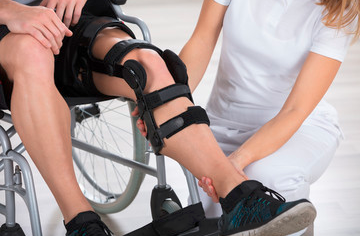
The therapy consists in the application of anti-inflammatories, rest of the joint, cryotherapy and compressive braces. It is convenient that the wrist remains immobilized a minimum of 15 days. If the traumatism is mild and the inflammation scanty, it is usually enough to rest partially for several days. Functional wrist braces made of elastic fabric and with corrective reinforcement splints are used.
Ankle joint
The tibiotarsal joint is the one that presents a higher risk of injury. The distension of the external lateral ligaments is very frequent and it is necessary to take into account that the fractures of badly treated ligaments lead to a chronic instability of very difficult restoration.
Chronic instability of the ankle
It is evidenced by symptoms such as discomfort and insecurity in walking, especially when an important effort is made in irregular terrain. A distinction is made between functional signs, such as dull pain with insecurity, very easy forced supination and lateral mobility of the ankle with protrusions and clicks, and radiological signs, which confirm the diagnosis by forced radiographs.
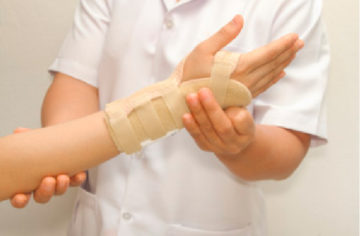
The treatment consists of the use of braces ready for use (orthosis), which help maintain joint stability and security. If the trauma is important, it is necessary to resort to the surgical intervention.
Bursitis
It is characterized by hemorrhage and inflammation of the serous pocket that protects the bone from contacts with hard surfaces. This injury is suffered by people and athletes who have suffered direct falls on the elbow, either due to their physical, work or sports activity. Popularly it is called “student’s elbow” and “elbow of the dart thrower”. The symptoms consist of pain, both at rest and in movement, painful sensitivity and swelling on the tip of the elbow and limitation of mobility in the joint. The affected person should rest and use light compression. Sometimes it is convenient to do a puncture to evacuate the fluid, serous or hemorrhagic. After the puncture, a compressive brace should be placed for a week. If inflammation persists, infiltrations with local steroid anti-inflammatory drugs will be performed. If the bursitis is severe and there are free bodies inside, the surgical bag should be removed surgically.
Knee joint
The knee is the most complex and delicate joint in the human body and is the most prone to injuries. Small ailments such as the “knee of the jumper” and the “knee of the housewife” are very frequent, which, if they are not treated properly, lead to osteoarthritis.
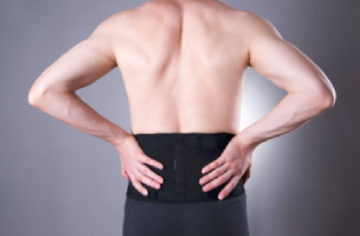
Role of the pharmacist
Many injured people go to the pharmacy offices to treat them in the injuries they suffer. If the lesion is benign, the pharmacist can indicate the measures to be taken and advise the use of the braces purchased by reliable supplier such as OrthoticTelemeds. If the injury is serious, it will warn the patient of the importance of his injury and send it to a clinical center. It is very important that pharmacists and their collaborators have adequate knowledge of the injuries that occur in the locomotor system, to identify their degree of severity and direct their patients towards the treatment and professional that suits them.
Read Full Article
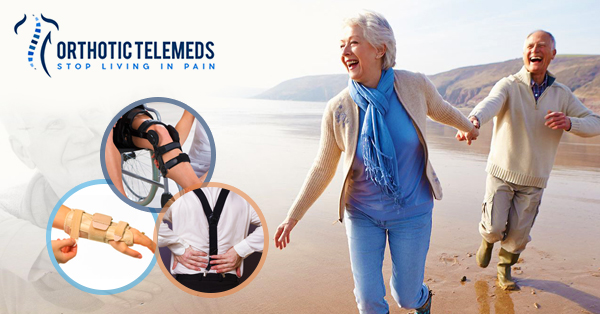
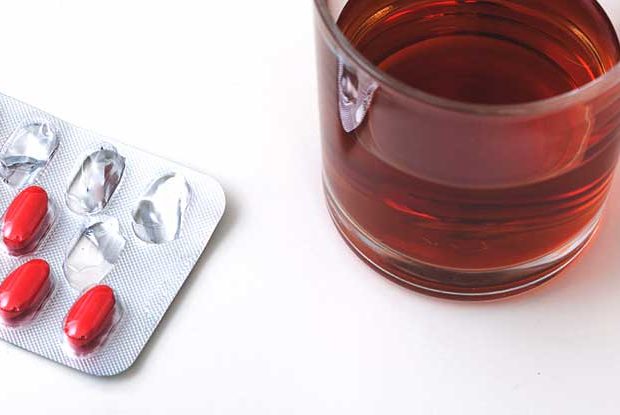
Recent Comments